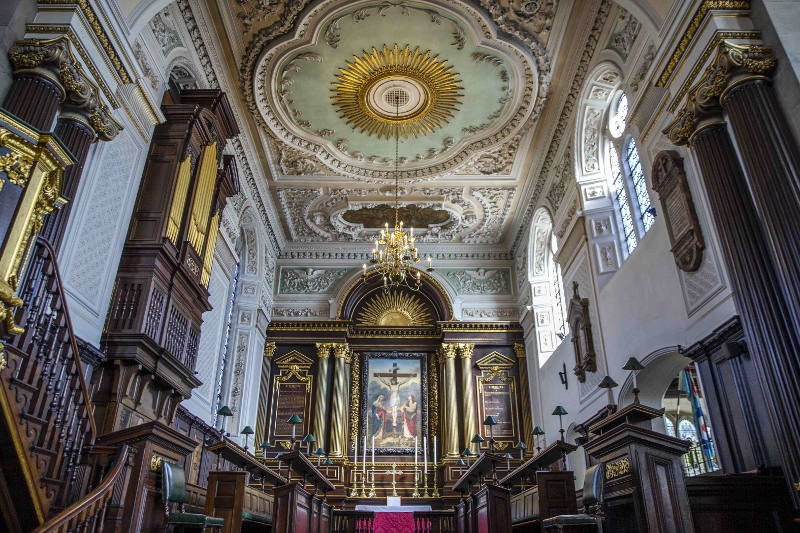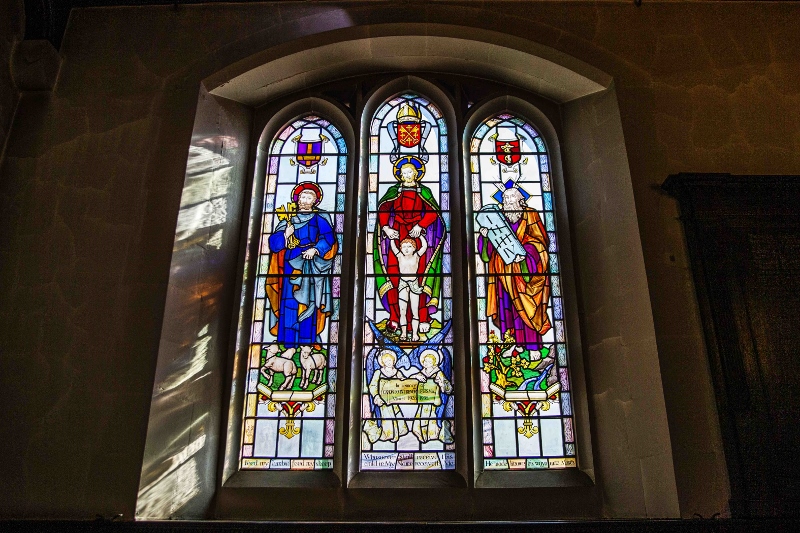Record details
| Title | All Saints' Church |
|---|---|
| Image |

|
| Description |
All Saints’, in the heart of the town centre, was built in 1680 in the Wren style. The church replaces the larger 11th century building, 'All Hallows', mentioned in the Doomsday Book, which was destroyed in the 1675 Great Fire of Northampton. Following the fire, King Charles II gave 1,000 tons of timber from his Royal forests in the county to help re-build the church, which was designed by King’s Lynn architect Henry Bell - a Northampton resident at the time. The current floor plan of All Saints' Church reveals much about the history of the building itself. The original church was twice the length of the present building. Only the tower and crypt under the chancel survived the fire. After the fire, a parliamentary commission was formed to rebuild the historic church and indeed the settlement. The Parliamentarian leanings of Northampton had resulted in the razing of the castle by King Charles II after his invitation to reclaim the throne in 1660. Despite this, the Earl of Northampton, a friend and confidant of the King, persuaded Charles II to contribute 1000 tons of timber from the Royal forests of Salcey and Rockingham. Such a magnanimous gesture, together with the repeal of the 'chimney tax' endeared the King to the people of Northamptonshire. As a result, they and others throughout the country, contributed to the rebuilding fund. A statue of the King, placed in 1712, sits above the carved portico to commemorate this donation. The portico design is a copy of the one Inigo Jones designed for Old St. Pauls in London.The following words are etched into its frontage: 'This Statue was erected in memory of King Charles II who gave a thousand tun of timber towards the rebuilding of this church and to this town seven years chimney money collected in it.' Stepping inside, visitors will discover magnificent stucco plaster work on the ceiling, grand wooden pews and a heavily gilted altarpiece. The church also has a charming tearoom at its frontage, and to the rear sits one of the town’s war memorials. The Cenotaph was designed by Sir Edwin Lutyens, who was appointed by the Imperial War Graves Commission, as just one of three architects to mark the end of World War One. Northampton’s Cenotaph is in illustrious company with Lutyens’ designs in Whitehall, Manchester, Glasgow, Delhi, Johannesburg, Toronto, Hong Kong and Auckland to name but a few, each monument connected by the same inscription “Their Name Liveth For Evermore”. The Memorial, or Lady Chapel, was the last substantial addition to the building, added in the 1920s in memory of those who lost their lives in the World War I. |
| Link | http://www.allsaintsnorthampton.co.uk |
| Images |

|
